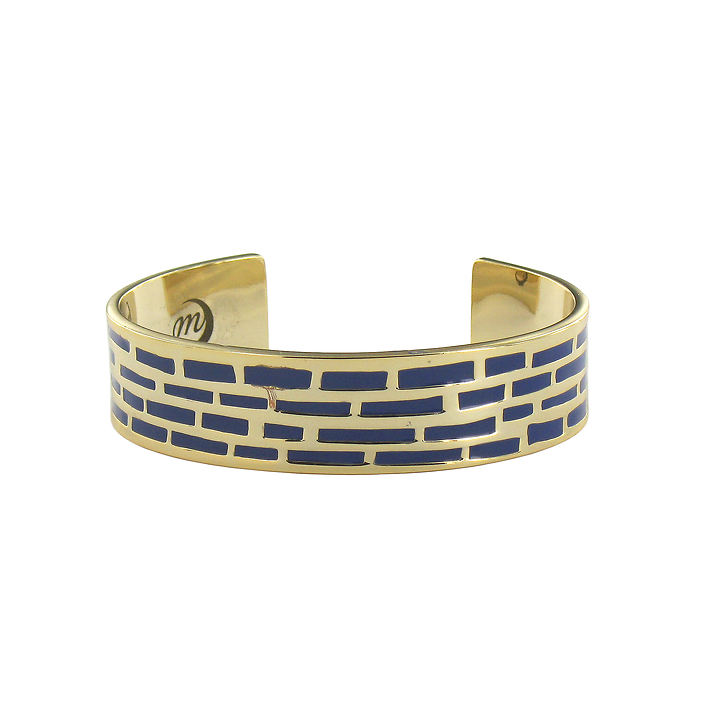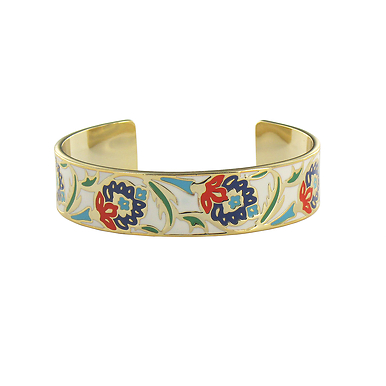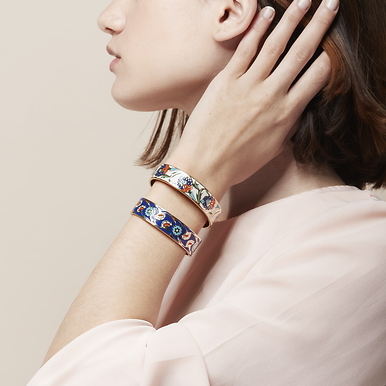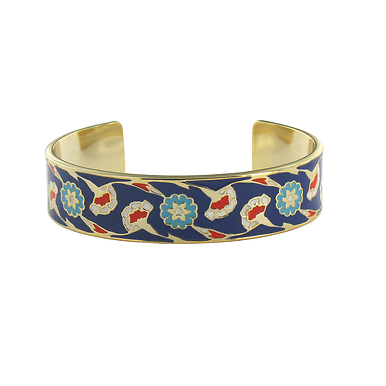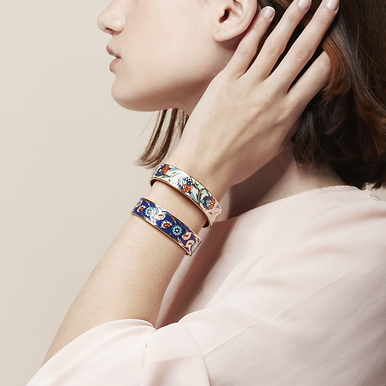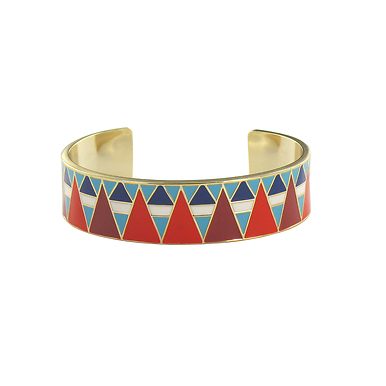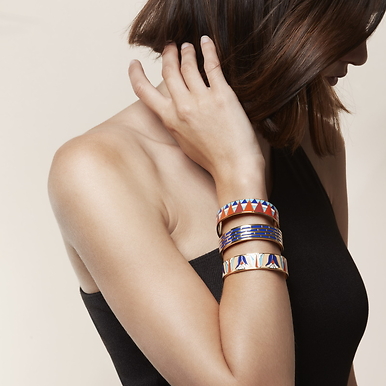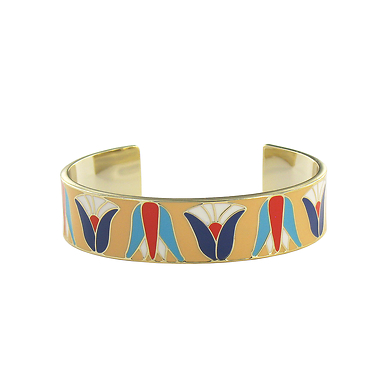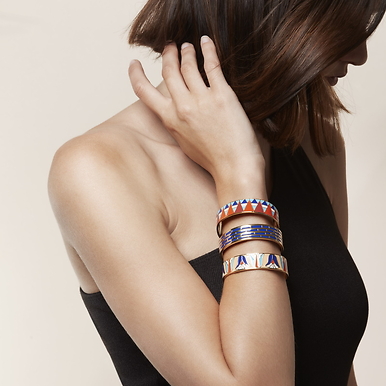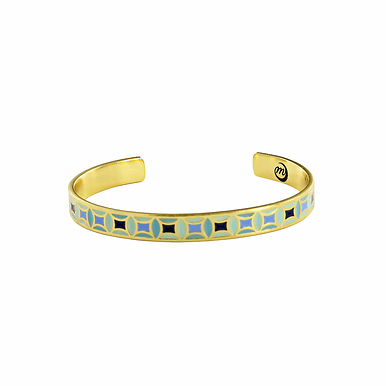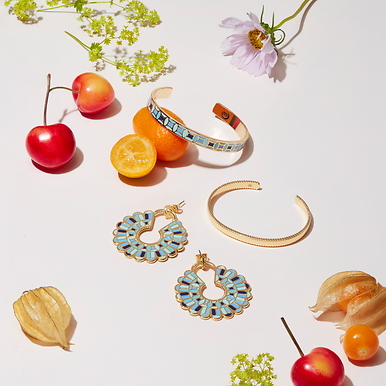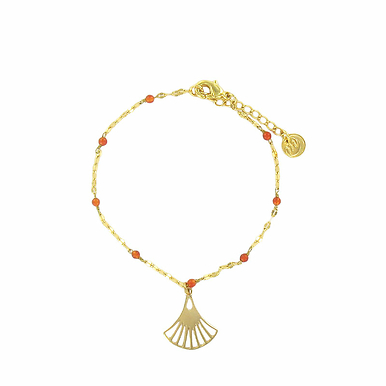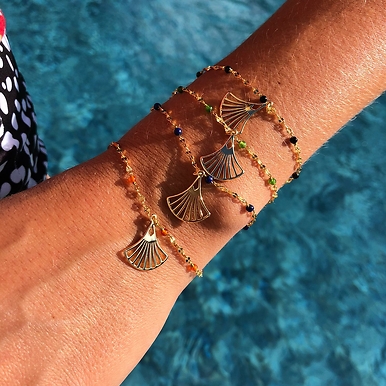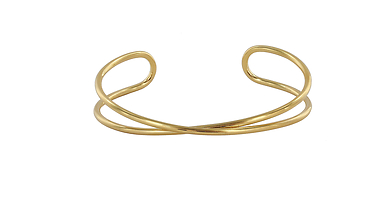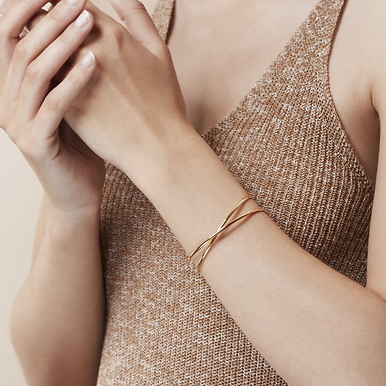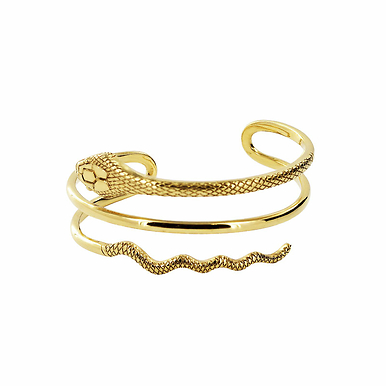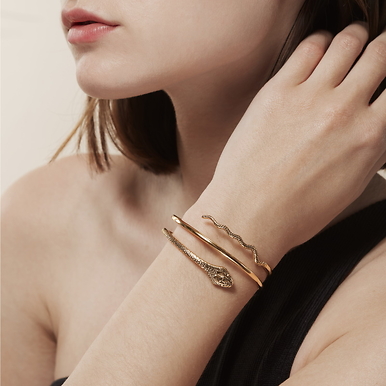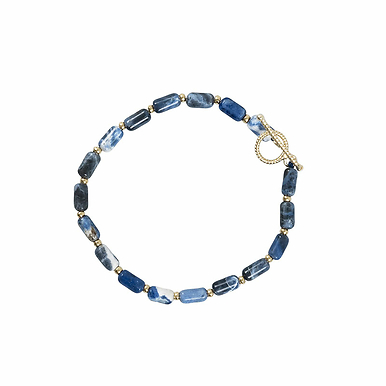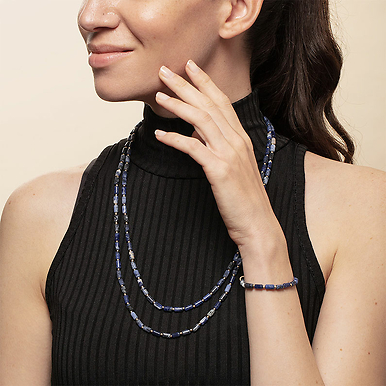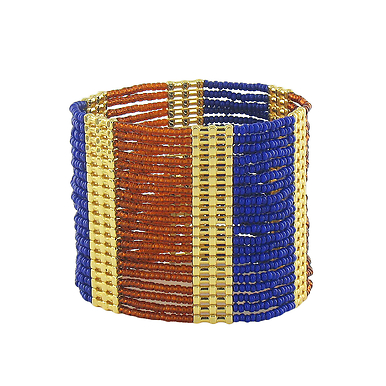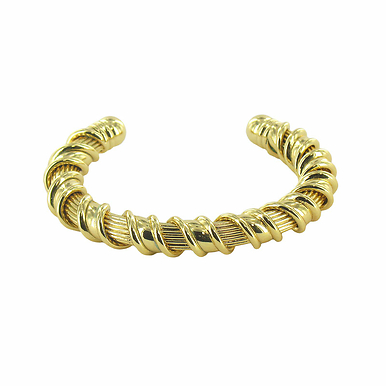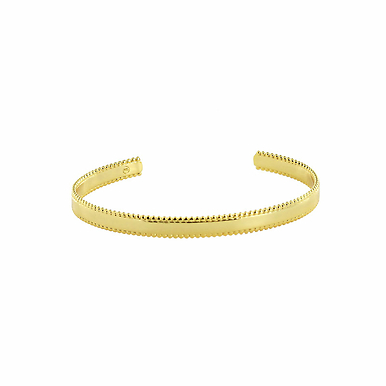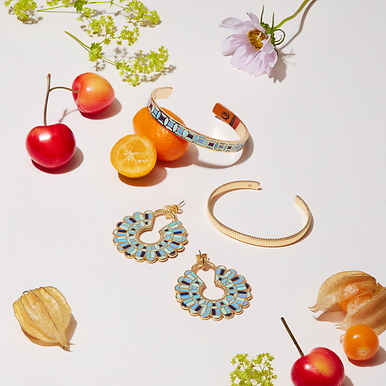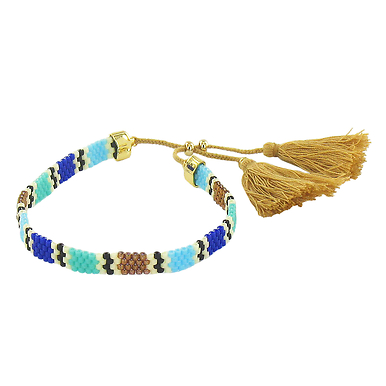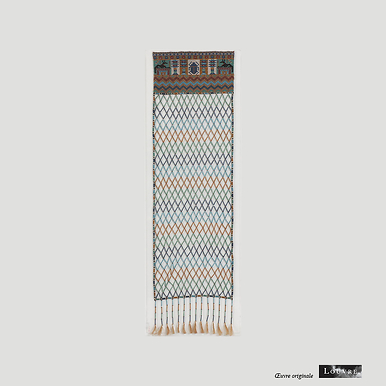Bangle bracelet Imenhetep Blue
BB400351
A jewel inspired by the motifs of Imenhetep's coffin.
This coffin found during excavations carried out between 1902 and 1903 in Touna el-Gebel has a polychrome decoration, the yellow evoking the gold of the flesh of the gods and the blue the lapis lazuli from which their hair is made. The identification...
Read more
A jewel inspired by the motifs of Imenhetep's coffin.
This coffin found during excavations carried out between 1902 and 1903 in Touna el-Gebel has a polychrome decoration, the yellow evoking the gold of the flesh of the gods and the blue the lapis lazuli from which their hair is made. The identification of the deceased with the deities guarantees his eternal survival. A wig with two blue and yellow sides frames the face of the deceased, he wears a large necklace with numerous strands of pearls (ousekh), a jewel that is very common among both men and women. This one, when it takes the form of an amulet, helps the dead person to free himself from his shackles during the passage of his soul to the afterlife. Further down the decoration represents the winged Nut goddess, regenerating goddess and personification of the sky, she swallows the sun each evening to bring it back into the world in the morning. The deceased on his funeral bed with lion's head and paws is framed by Isis and Nephthys. The first masks, made of stucco, appeared in the Old Kingdom (2700-2200 BC). They were then often made of cardboard or stuccoed layers of cloth. The masks remained in use up to and including the Greco-Roman period.
Material: gold-plated brass, resin.
Keep the jewel away from dust and moisture.
Avoid contact with perfume, chemicals and cosmetics; avoid getting the jewel wet.
Close
Sold by GrandPalaisRmn

